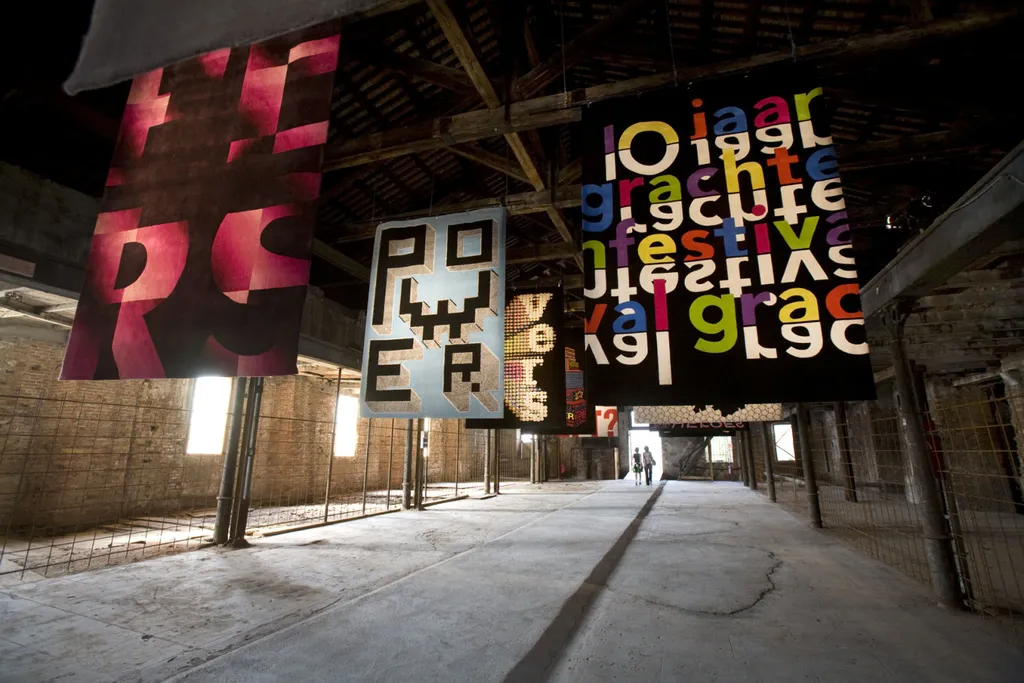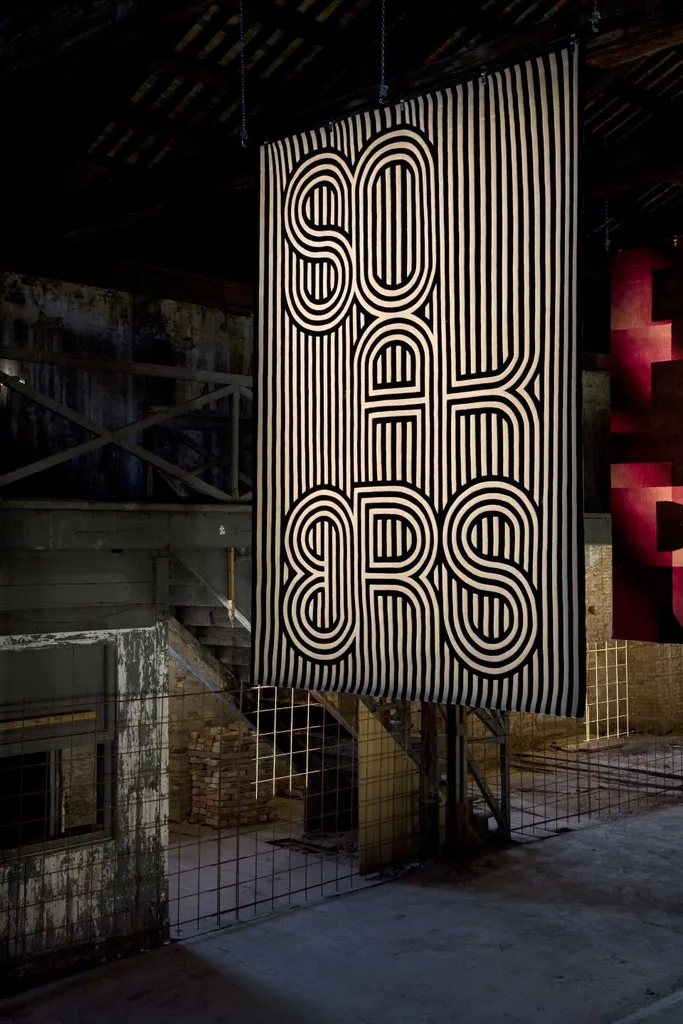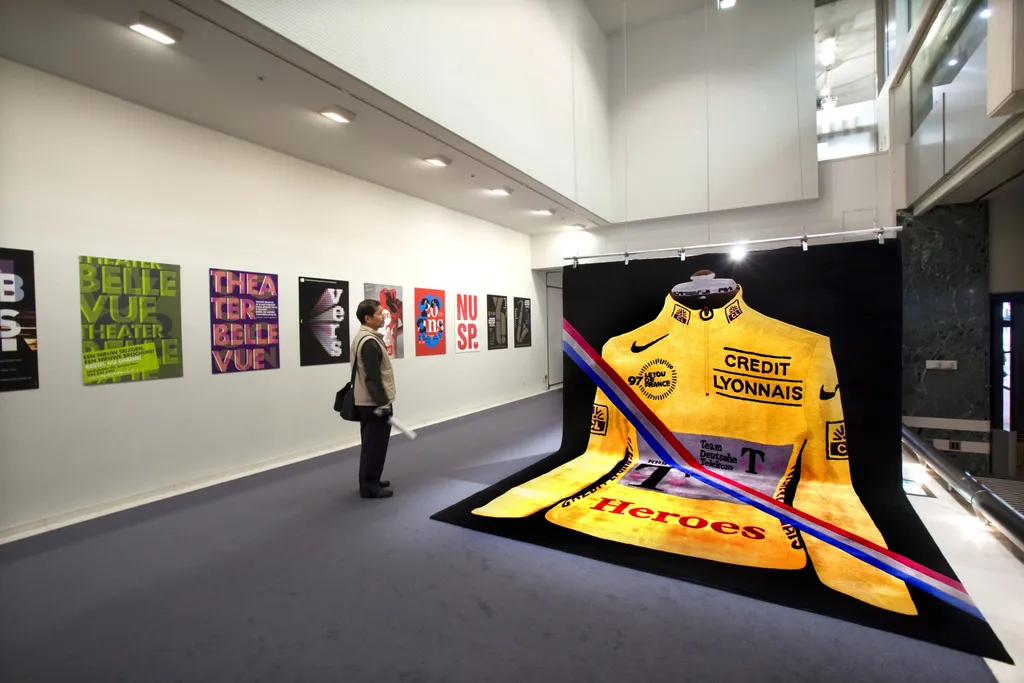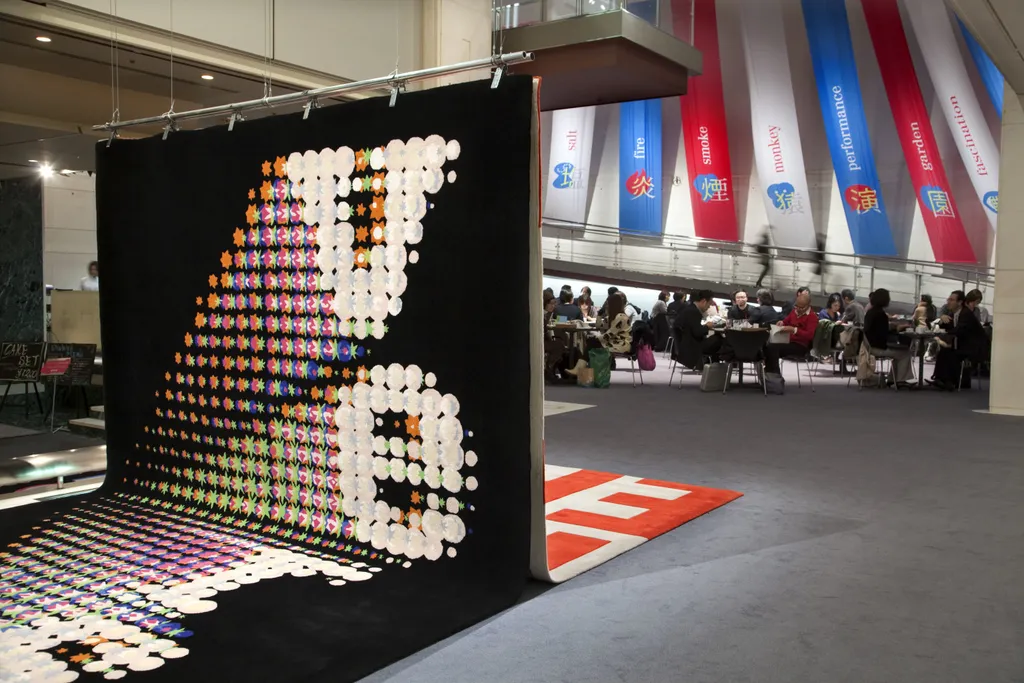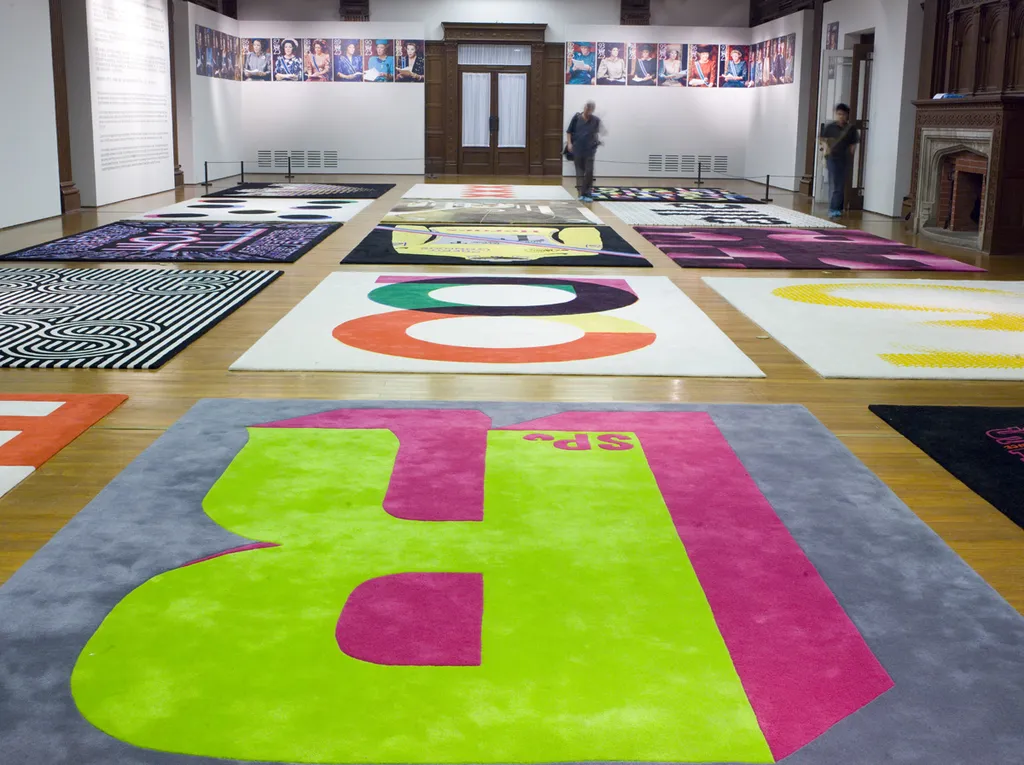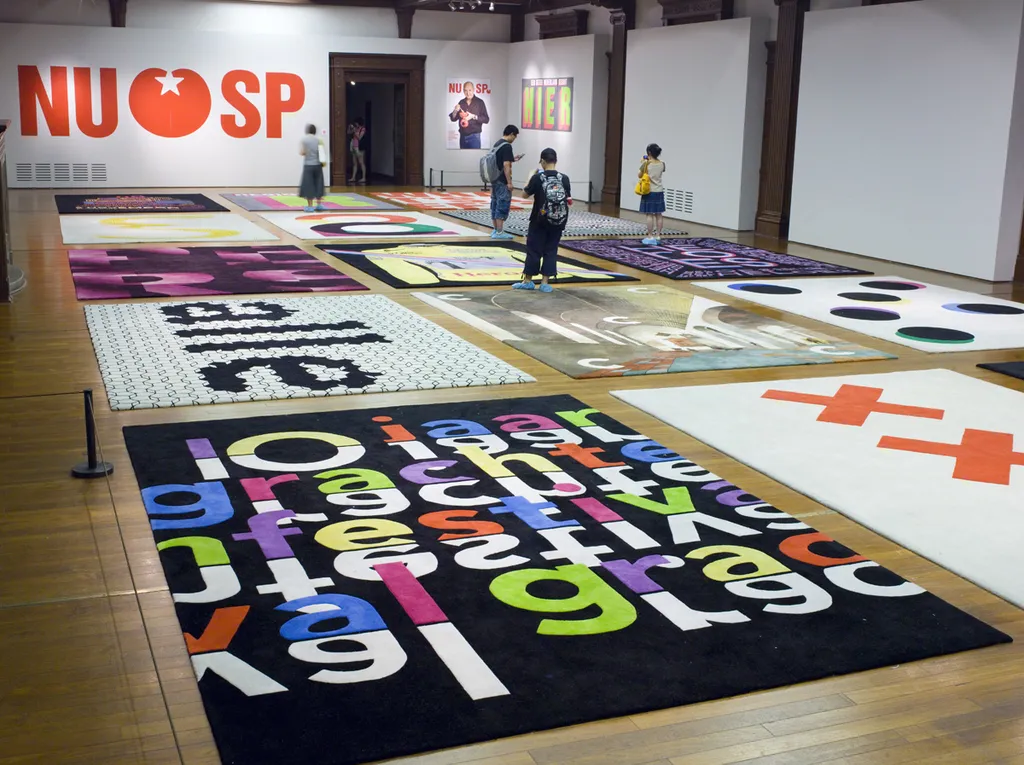The carpets, a series compiled from existing designs and fragments of them, will function as sub-signs of a super sign. Thanks to the opportunity of getting this new work made in the form of carpets by Chinese carpet weavers, it was again possible to install the separation of concept and completion that lies at the foundation of the conceptual design method thonik has employed from the outset. Data from the studio’s digital image archive are being electronically transferred to Chinese carpet weavers, who will transform them into monumental objects.
Indeed there is hardly any other medium that finds itself at a greater distance from modern-day design practice and the modern media than the carpet. The tempo at which the woven thonik designs are perceived is slowed by increasing their size. The designs now fit the dimensions of the space in the museum they will inhabit. The carpet as medium offers the designers the opportunity to literally objectify their own work, to increase the distance to it, thus creating space for reflection and analysis.
This space also comes about because sixteen designs, originating from various projects, are being taken out of their original context and brought together in a new composition.
As we have seen, the selection of the projects was based on the categories of clients thonik works for, but it also aims to show examples of processes that are characteristic of the design method thonik has used in recent productions. This reflection on their own actions as designers takes place here not in a philosophical vacuum but by initiating a new type of design.
The visitors to the exhibition have something to gain from it too. The basic vocabulary of the thonik language is presented in the sixteen carpets. This begins with the focus on the elementary sign and continues into the development of a graphic system in which the shape of the text takes over from the logo. In some carpets it will be possible to see how a graphic system is applied, either in an image or to create an image itself. And lastly, the carpets will demonstrate various processes for ornamenting the font or word picture. The visitors to the museum are invited, wearing slippers with the title of the exhibition on the sole, to step on to thonik’s work. Walking on, between and beside the thonik carpets they will experience an immediate sensory and physical relationship with a work which, seeking information or inspiration, they will otherwise only get to know through reproductions in design magazines and books.
